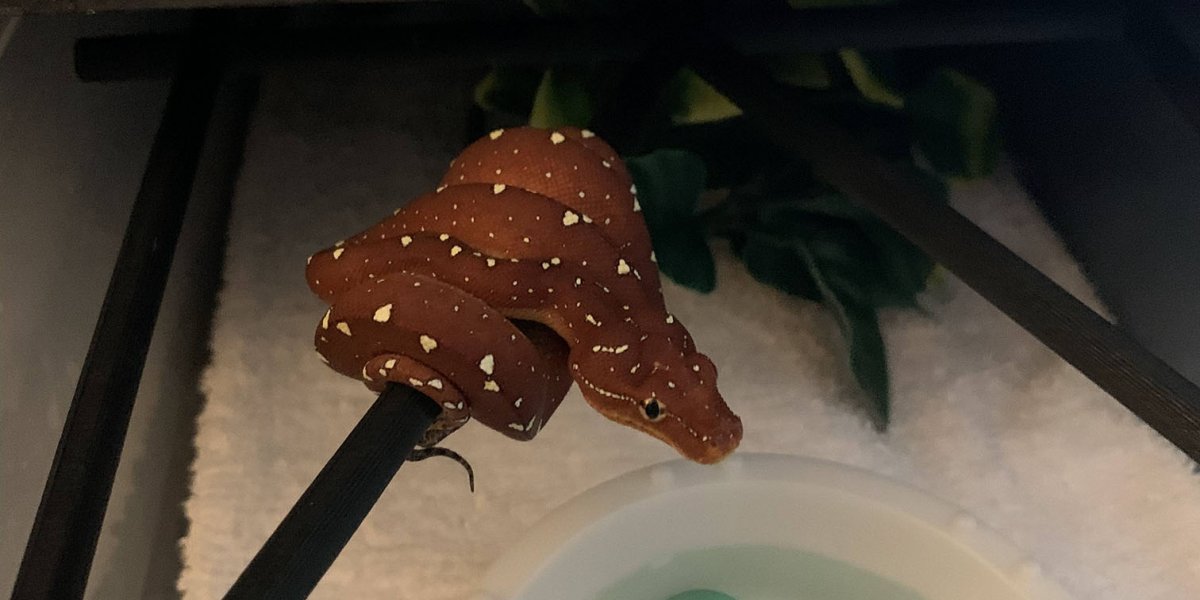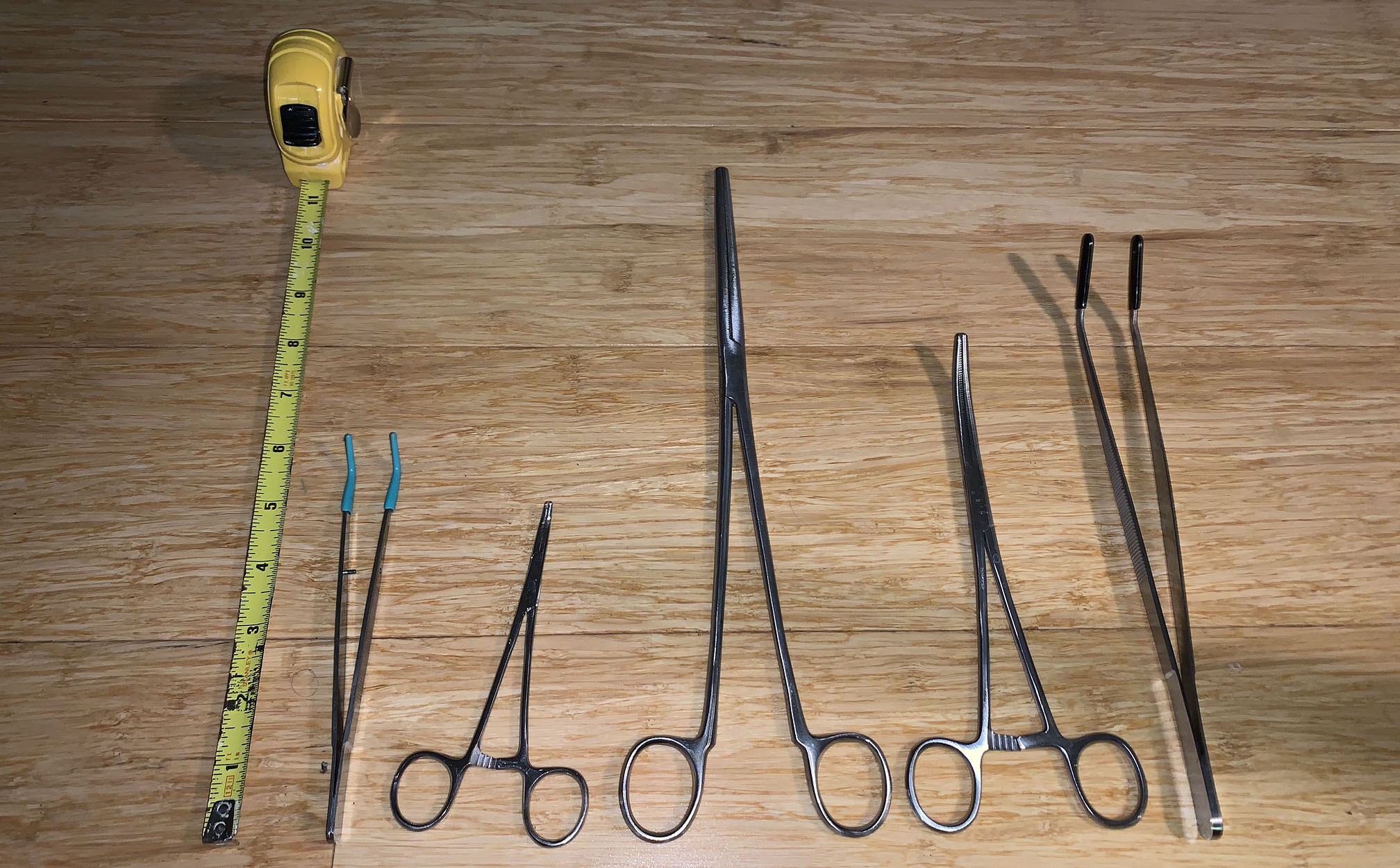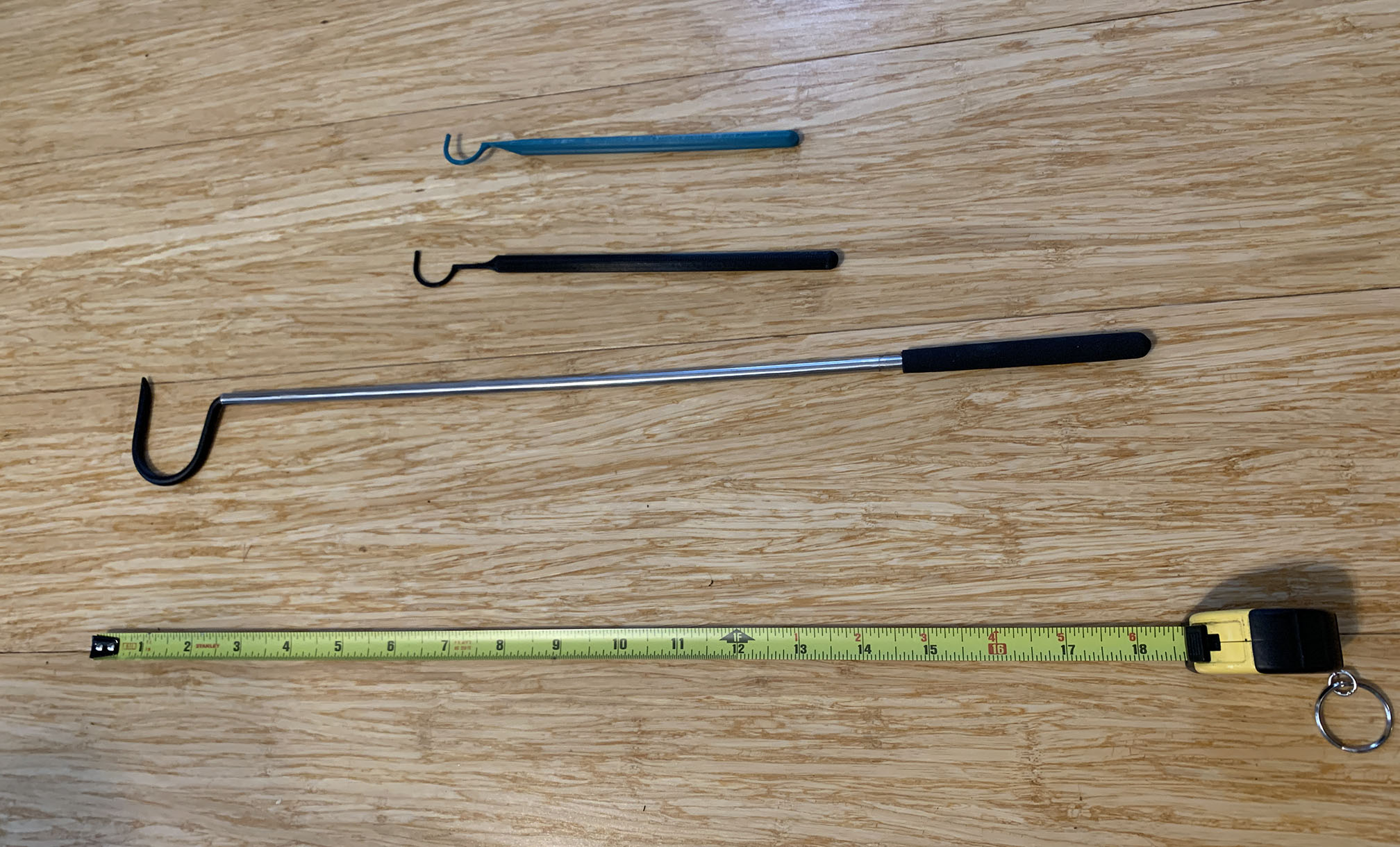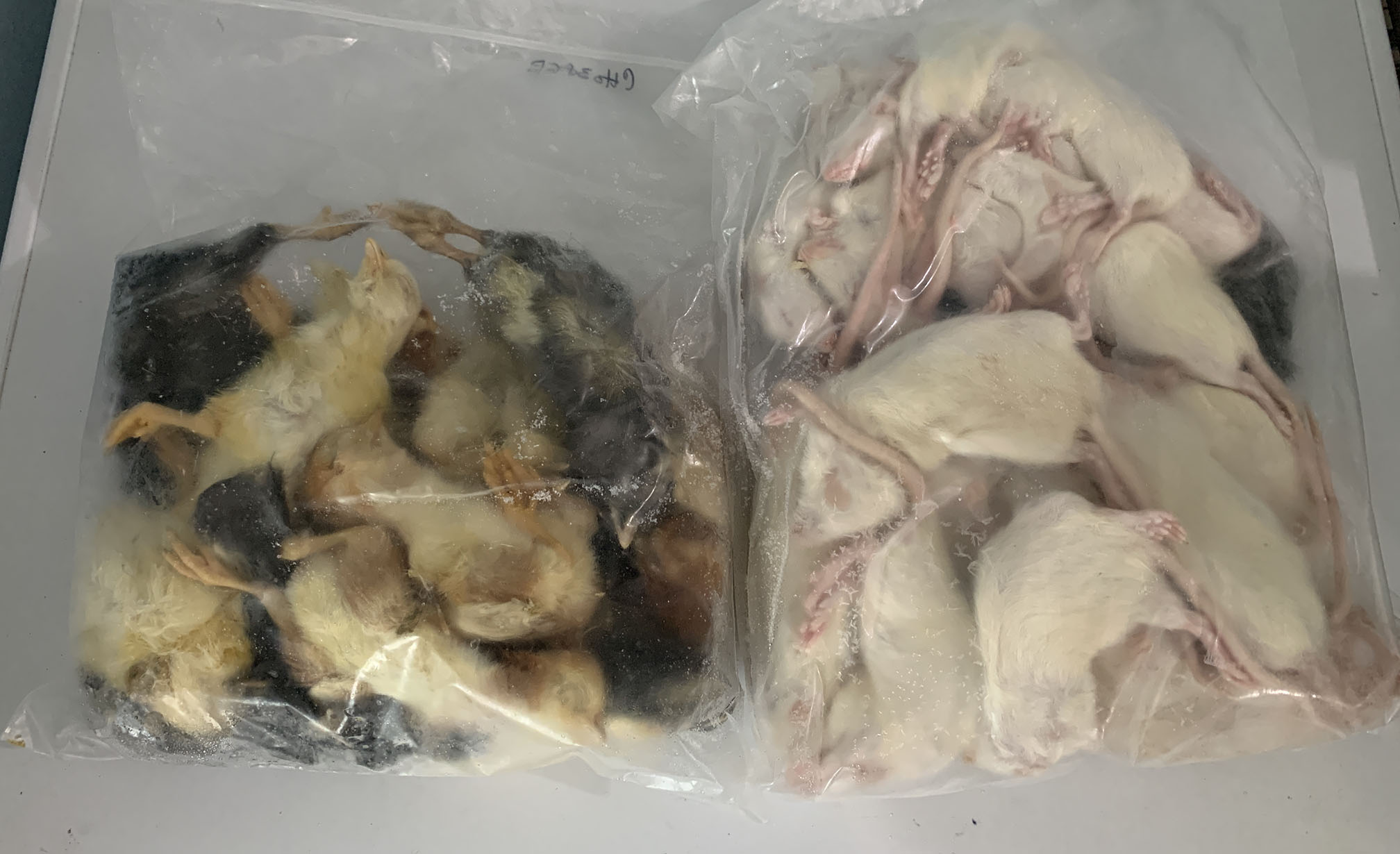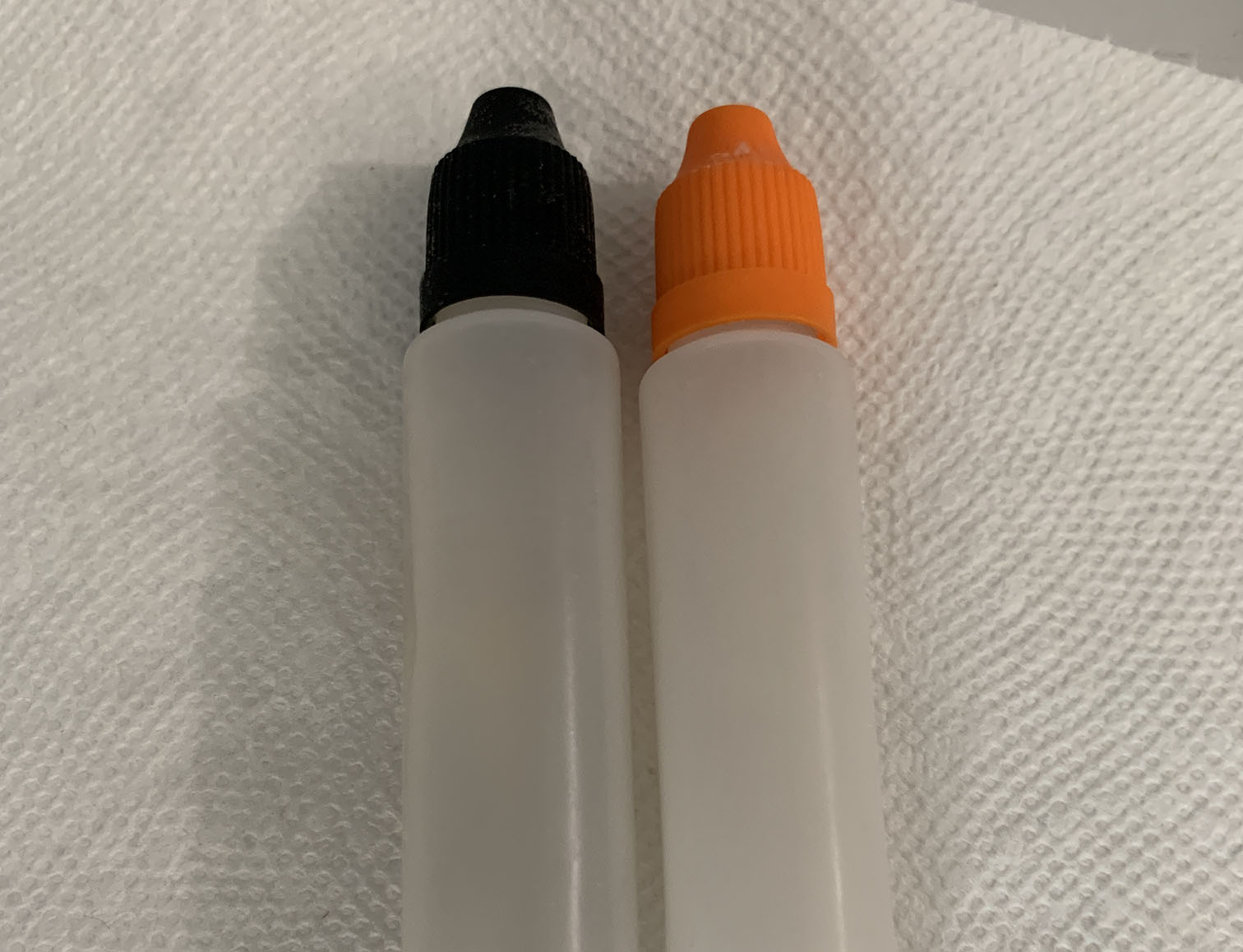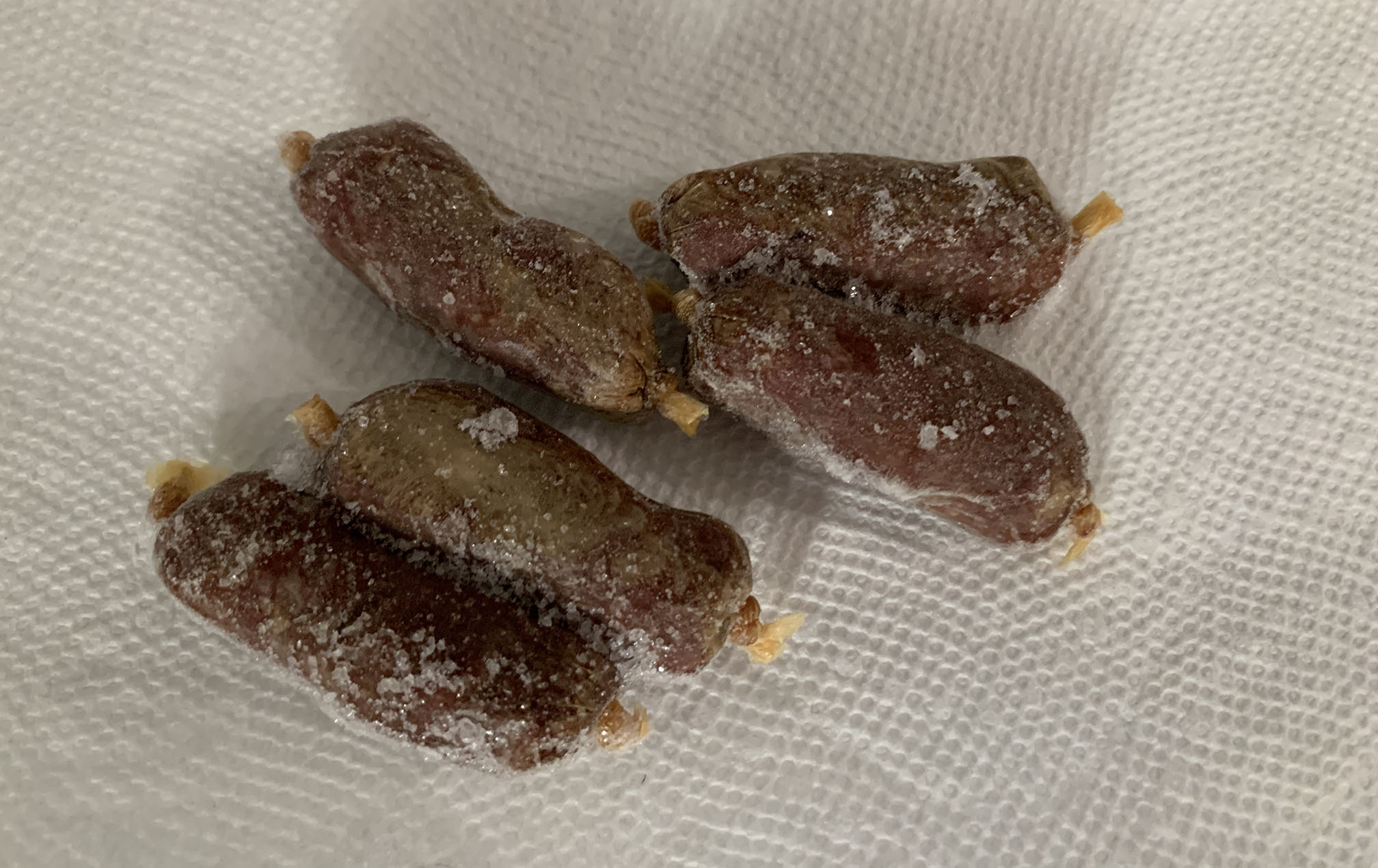Getting hatchlings to start eating
Below are some tools, husbandry considerations, food ideas and tips for getting baby snakes started eating. Keep in mind that each snake is different, even within the same clutch, and different species may have general favorites. Be creative!
Tools:
Tongs/hemostats- balance between grip, maneuverability, and length. Longer tongs will keep your hand and heat signature away from the baby. Shorter tongs will allow you to maneuver around the perch for smaller, arboreal babies. Tongs allow you to let go easily but are also more difficult to hold onto the mouse with. We have used 6-12” hemostats, preferably non-locking, but tend to favor 12” hemostats.
Snake hook- generally can find these at reptile conventions, but it is more difficult to find sizes for tiny babies. Specialty Enclosure Designs [https://www.specialtyenclosuredesigns.com/] makes 3D printed snake hooks that are a good size for baby green trees. More recently, we have been 3D printing our own mini snake hooks at home using PETG. Snake hooks are good for babies that go astray when attempting to feed.
Enclosure Temperatures:
Base temperatures are dependent on species. We tend to keep the babies in their midrange to attempt stimulation of feeding. Temperatures that are too low may discourage babies from eating.
Food Ideas:
Also dependent on species, but we have tried to aim for foods that would appeal to wild snakes when traditional foods fail.
RODENTS
Mice- generally we try frozen thawed (FT) mice first. Day old pinkies for green tree pythons, and large fuzzies or small hoppers for baby ball pythons. Larger mice make a bigger target and have fur, which may make them carry more scent. We try live mice of appropriate size next. It also may be worth mentioning that some snakes, such as young carpet pythons, will not eat pinky mice but will eat fuzzies because they are furred, carry more scent, and are much more interesting. We were able to get one green tree baby to eat by trying a live peach fuzzy, as it walked around instead of kicking helplessly. It was a huge meal for him, but it worked. It may be a try.
Braining rodents- I’ve heard that this is very successful—essentially cracking/puncturing the skull of a FT rodent and rubbing some of the brain matter on the rodent’s nose. Most of these rodents are already small and you can achieve this with a toothpick. However, I can’t say it has ever helped make a difference with our picky eaters.
Rats- Have tried scenting with rats and using live rat pinks to tempt picky babies. Our pickiest baby ball python from a clutch of six took a live pinky rat immediately after a couple weeks of refusing mice. If it smells like mouse, he won’t eat it.
SCENTS
Chick/quail scent- Seems to have the best results of the scents for green tree babies, despite their more natural diet of lizard/skink. I keep frozen chicks and pull out a tuft of feathers to rub on the prey item. Day old chicks tend to be, in my experience, less bony than quails and they smell much better (for the humans, anyway).
Lizard/anole scent, frog scent- Reptilinks [https://reptilinks.com/] has bottles of unique scents of prey animals that are more difficult to come by. You can also obtain scents by rubbing on a captive frog/lizard, or using caught and killed animals (freezing first should help mitigate problems with parasites of wild animals, but I would still use them with caution).
Fish scent- Have not used this much, but have heard luck with anything from tuna juice to rubbing on other kinds of fish for scent. Worth a shot.
Hamster/gerbil scent- Have not used it much personally, but have heard it has been very successful with others. Obtain used bedding from an individual or a pet store, and rub the prey item with this used bedding.
OTHER WHOLE FOOD
Wild caught lizards and frogs- Keepers have had luck with live lizards and frogs. However, keep in mind that wild-caught food carries a higher risk of parasites. Also consider the availability of the food—if you won’t be able to consistently provide the food item, it may not be very useful. For those who have the means, it is possible to successfully use them to get a snake started and then move from these items to scented rodents once the snake is feeding well.
Whole fish- Some snakes will only eat fish. These may be easier to access than lizards and frogs. However, if your snake eats exclusively fish, they will eventually be at risk of a vitamin B deficiency. Consider switching them eventually to other prey items, varying their diet, or getting vitamin supplements. Snakes with a vitamin B deficiency will demonstrate neurological problems and seizures that resolve once proper vitamin B levels are restored (McCormack, 2015).
Insects- I have had limited experience offering insects to snakes. I would use caution with it, since it is difficult to determine how much they should eat, manage parasites, and maintain an appropriate calcium to phosphorous ratio. With our green tree babies, the few that did try bugs did not eat them, and usually just made a mess, as even these tiny pythons destroyed the prey items with a bite. However, the mice may have looked more appetizing afterwards!
Reptilinks- This site opens up a variety of whole-prey foods that may not otherwise be available—like chicken, quail, rabbit, duck and insect—as sausage links. I’ve used them whole for my tricolor hognoses (they enjoyed the variety) and monitor lizard, and without casing to get our foster box turtle to start eating. I personally have not a lot of luck getting baby green trees to eat them (even with frog links) but they are definitely worth checking out if you are in search of ideas (https://reptilinks.com/).
Feeding Techniques for FT items
Dependent on species and individual animal. However, in my experience so far strikes will come from babies that are fearful—to a point. The baby must make contact with the prey item and then the baby must recognize the prey item as food. Some babies will stop striking when they realize the prey item isn’t going to kill them. Then, they will either take an interest in it or avoid it.
Here are my suggestions:
1. Be interesting. Keeping the rodent at a good striking distance and having it move around on the substrate is helpful. The scuffling sounds/vibrations may interest the baby.
2. Little movements. Sometimes a tiny up-and-down movement near the snake will prompt a strike.
3. Be annoying. For baby green trees, too much antagonizing can cause them to hide or run—both unproductive. However, a little rubbing on the butt or tail might just be enough to get on their nerves. Be like the little kid who says the same thing over and over. Be persistent, and they might just get annoyed enough to bite. If you eat the mouse, it’s not annoying you anymore.
4. Take breaks. Don’t push until your snake is hiding or halfway out of the box and you’re frustrated out of your mind. Try them for a little bit, and then come back and try again. Keep at it when you have a baby who is interested, striking, or increasingly irritated at what you’re doing. If they’re starting to shut down, try and get them to come out a bit (finish on a positive note) and then give them a break. If they’re starting to run and ignoring the food, you should probably stop and give them some time to come back to center.
Sources: McCormack, S. (2015, February 17). Thiamine (Vitamin B1) deficiency in garter snakes. The Exotic Pet Vet Blog. https://exoticpetvetblog.wordpress.com/2015/02/17/thiamine-vitamin-b1-deficiency-in-garter-snakes/

